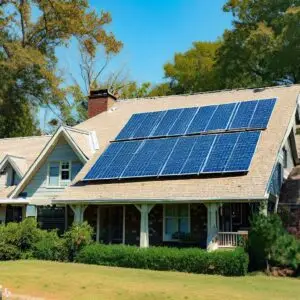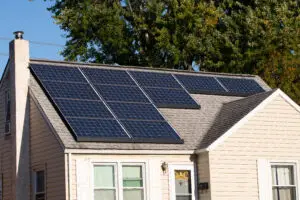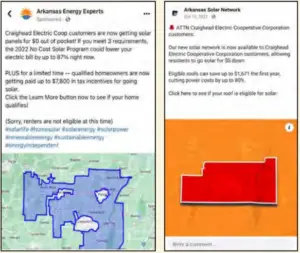NOTE
This post is applicable to grandfathered Legacy Net Metered accounts only.
Consumer-owned generation like solar panels is a hot topic with the members of Craighead Electric Cooperative (CECC). Ads on social media, door to door salesmen, and word-of-mouth hype drum up lots of attention to the topic. When looking into whether solar is right for you, value is the biggest question to answer. Will the investment be worth it? While there are plenty of reasons to consider solar that are not financial (environmental concerns, energy independence, keeping up with the Joneses, etc.), the financial implications are a little more straight forward.
The first thing to consider is the total cost to install a solar system, whether it be cash-in-hand or a lease/loan that also comes with interest fees. Solar contractors generally offer free quotes if you want to know exactly. A typical small system installation starts at about $30,000 and goes up with the number of panels. There is a federal incentive that gives you a tax credit equal to 30% of the total cost of the system, but you must owe a tax bill in the first place to take advantage of this. Even taking this into account, total installation costs will be a few dozen grand. Let’s assume a $26,000 total cost as an example.
So how long will it take to make that money back as savings on your electric bill? To figure that out, we need to know how much you actually pay for energy every year on average. If you have a few years of billing history with CECC, you can head to SmartHub and click on BILLING HISTORY to see your past bills, but you can’t simply add up your total bills and figure out your average. Solar systems on CECC’s Legacy Net Metered billing currently earn kWh credits towards netting out the energy line items on your bill only (Energy Charge, RTO Adjustment, and Debt Adjustment). Other flat-rate items like the Availability Charge, Device Charges, and some taxes continue to be billed to Net Metered accounts even if all energy charges have been covered for the month. A typical residence on CECC lines pays about $1560 a year in energy costs, on average.
To calculate a simple payback on this example, you divide the average energy cost into the total cost of the system: $1,560/26,000=16.6 years till the breakeven date. You could include projected rate increases in this calculation, but CECC energy rates have only risen about 1% a year on average over the past 10 years, well below inflation, so it would just push the breakeven date even further into the future. So, this example solar installation, grandfathered into Legacy Net Metering until the year 2040, will pay for itself and start providing value to its owner in about the year 2040, just in time for the grandfathered solar compensation rates to expire and drop from retail to wholesale.
After calculating this payback date, many prospective solar shoppers choose not to move forward with installation due to risks and unknowns of operating the system for that long: “Will I even still be living at this address 16 years from now? What if a piece of equipment breaks between now and then? What if they are mounted on my roof and I need to replace the shingles before then?”
If going solar is not worth it to an average member, who does it make sense for? Homes with energy needs that are well above average fare better. Larger all-electric houses, perhaps with a shop or pool, electric vehicles, well water pumps, etc. have many more kilowatt-hours available to net out per year and can see quicker payback dates. Consumers who live in parts of the country that have higher energy rates than Arkansas ($0.12/kWh on average) like California ($0.32/kWh on average) or Hawaii ($0.42/kWh on average) make solar a no-brainer in those areas. Akansas’ 32%-lower-than-national-average electric rates make residential solar harder to justify.
If an investment in solar takes so long to pay off, what would be a better investment? Upgrading your regular water heater to a new high efficiency heat pump water heater is a good example. They use up to three times less energy than a typical water heater and have a $2000 tax credit available from the federal government. Savings like that are equal to installing a half dozen solar panels and the upfront costs can be recuperated in just a few years.
Contact Craighead Electric if you have any questions about going solar or any of the complicated financials that must be considered before doing so.




